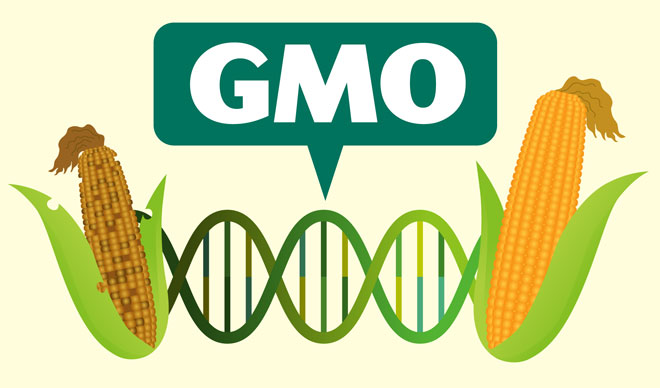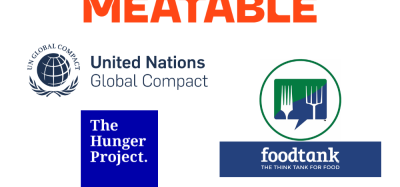Why the GMO debate still matters
- Like
- Digg
- Del
- Tumblr
- VKontakte
- Buffer
- Love This
- Odnoklassniki
- Meneame
- Blogger
- Amazon
- Yahoo Mail
- Gmail
- AOL
- Newsvine
- HackerNews
- Evernote
- MySpace
- Mail.ru
- Viadeo
- Line
- Comments
- Yummly
- SMS
- Viber
- Telegram
- Subscribe
- Skype
- Facebook Messenger
- Kakao
- LiveJournal
- Yammer
- Edgar
- Fintel
- Mix
- Instapaper
- Copy Link
Posted: 9 December 2016 | Mark Hughes, President, Anderson Partners Food Ingredient Marketing | 2 comments
With the GMO debate far from over, we asked Mark Hughes, President, Anderson Partners Food Ingredient Marketing for an insight into why the conversation still matters…


With the GMO debate far from over, we asked Mark Hughes, President, Anderson Partners Food Ingredient Marketing for an insight into why the conversation still matters…
Many major food manufacturers including General Mills, ConAgra Foods and Campbell’s have announced over the past year that they will begin labelling their products to state that they contain GMOs or genetically engineered ingredients.
While all of these companies have stated unequivocally that they agree with the scientific consensus that GMO foods are safe, they have been forced to start labelling their products to comply with new labelling regulations.
The regulations call for a simple statement in the ingredient label on the back of the package instead of the “skull and crossbones” negative warning symbol many anti-GMO advocates had been hoping for. Many of these same anti-GMO advocates have been claiming victory in the debate over GMOs while, in fact, well over 90% of all packaged foods sold in the U.S. will continue to contain some level of genetically engineered ingredients.
In this overheated and passionate environment, what should responsible leaders in the food science community think about the continuing debate over GMO technologies? Even though packaged food products will begin labelling the inclusion of GMO ingredients, the science behind GMO technologies will continue to play a crucial role in the evolving future of food. The food science community needs to have a clear and common sense position supporting the scientific consensus behind the importance of these technologies.


In thinking about this position, it is helpful to view the GMO debate through the lenses of the “Rich World” and the “Poor World.” In the “Rich World,” consumers are able to make “lifestyle choices” about the foods that they eat. Many “Rich World” consumers can afford to pay the increased costs associated with organic, natural and non-GMO food choices. They can make these types of “personal fashion statements” about the foods they choose to buy and eat.
“We need GMO technologies in order to meet the increased demand of food production…”
In the “Poor World,” the least-developed countries around the globe, consumers are often simply trying to find enough food to feed themselves and their families. They cannot afford the kind of fashionable food choices that consumers in the “Rich World” are able to make.
It is in these developing countries where the benefits of GMO technologies are needed most to increase crop yields, adapt for climate change and provide proper nutrition. The United Nations estimates that world population will expand to over 9 billion people by 2050 and that the vast majority of that population growth will take place in the least-developed countries of the world.
Over 90% of all packaged foods sold in the U.S. will continue to contain some level of genetically engineered ingredients…
We need GMO technologies in order to meet the increased demand of food production required to feed this rapidly growing global population. GMO technologies and GMO scientists can help us feed the world, if we let them. The food science community needs to take the lead in advocating for the sensible development of advanced GMO technologies. We should support scientifically sound GMO practices and take the initiative to communicate the food science position to help educate consumers in the U.S. and worldwide. And we can do all this while still supporting openness and transparency across the food industry.
In the final analysis, feeding a rapidly growing world population is the “Grand Challenge” of our generation and the real goal of the evolving future of food. As Newsweek magazine recently said:
“If we can’t feed the world, it will eventually feed on us.”
It is clear that the GMO debate will not be going away anytime soon and it will be interesting to monitor its development in the wake of Trump’s election, particularly with respect to regulation.
________________________________
Mark Hughes is a leading expert in global food ingredient marketing and a recognised thought leader in new communication models. His firm, Anderson Partners Food Ingredient Marketing, works with major ingredient marketers like Chiquita Brands, ConAgra Foods, Ardent Mills and Land O’Lakes Global Dairy Ingredients.
Hughes is an active member of the Institute of Food Technologists (IFT) where he serves on the IFT’s Scientific Program Advisory Panel and on the leadership committee of the IFT’s Marketing & Management Division. He is a long time member of the Research Chefs Association (RCA) and was elected to the RCA Board of Directors in 2016.
Related topics
Food Security, Genetic modification (GMO), Packaging & Labelling, Regulation & Legislation, Sustainability










Although I clearly agree that to the best of our current knowledge all of the presently marketed GMO foods are safe to eat, I find it a little hard to believe that privately patented GMO foods are actually designed to lessen world hunger and will genuinely bring tangible benefits to “the least-developed countries around the globe”, unless such products are given to developing countries free of any licensing costs, which is incompatible with the purposes and the costs of international patent protection. “Open source” GMO foods could be potentially beneficial to many developing countries but this does not seem to be a prevalent trend in the industry at this point.
I live in a developed country(Perú) and here are the so called “popular markets”…lots, and there you fairly now if it’s organic (even supermarkets) but people really don’t seem to even care(but decreasing), the laws in favour or against are as much as fingers and with legal gaps.
If any company(small or big) have the tech, they ain’t gonna use it in regions where they can use cheaper ones without blackouts from customers. I found extremely hard to enter into these markets where the customers don’t have the education, and if they see GMO for sure they will panic.